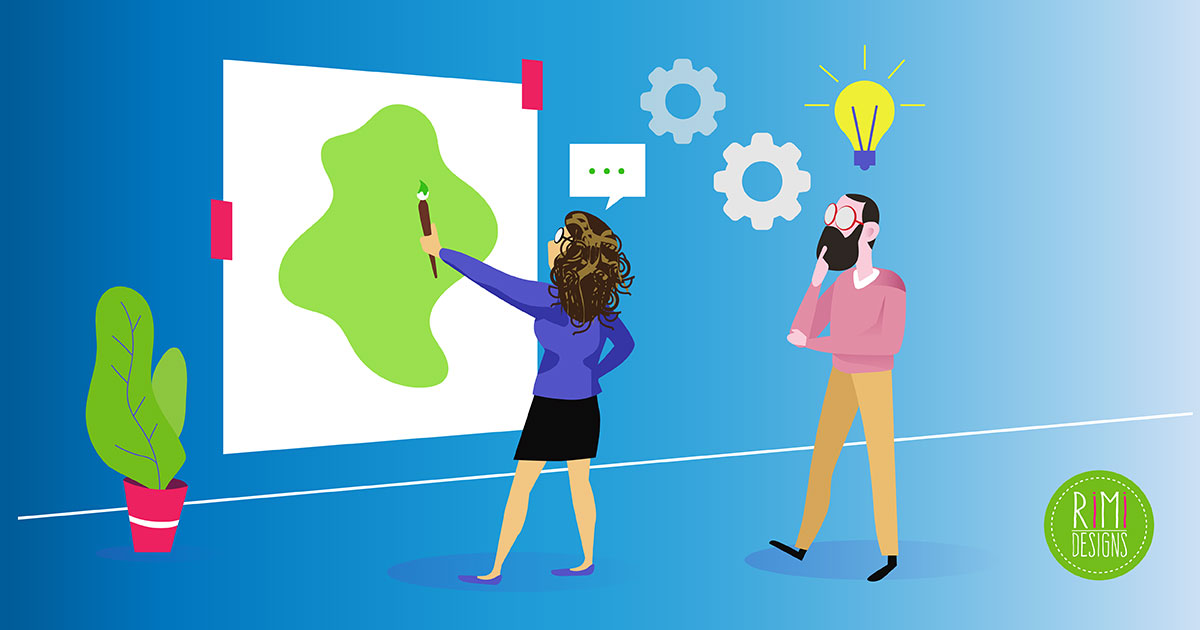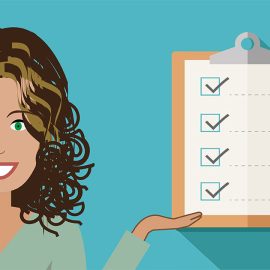
How to Use Website Layout to Emphasise Your Message
When creating a website, you can use layout and design to help ensure that your message gets across and leads your visitors to your goal action. In order to do this, you need to first understand factors, such as how the human eye moves across the screen and how the human brain processes information.
1 . Our eyes scan pages the same way
Whether words or images, visitors naturally read content from left to right and from top to bottom. We scan images the same way as we read text. This means that the top left section of any content block serves as an anchor for your visitors; this is the first place they will likely see when their eyes scan your website. Put in this real estate an image or text that will attract your visitors to stay on your site and read on.
2. Colours set the tone
Colours play a strong role in setting the tone of your website and are a fundamental tool for communicating your message. They send instant cues to the visitor about what type of business you are. They are also integral to creating a mood for your website – professional, fun, relaxing etc.
A deep red can say powerful and sexy, while black, grey and blues are neutral, professional colours and are often used in business and technology websites.
Weddings and romance are often associated with white, pink and turquoise and warm brown tones can be used to create a soothing feel, good for spa, crafts or home design websites. Greens are a natural fit for websites associated with the outdoors, the environment or ecological products.
3. Images also set the tone
In addition to helping set the mood, images convey to visitors how professional your business is. A good website depends upon good images. Even the best graphic designers will struggle to create a great website without quality images. The quality of your images and photography sends a message to the visitor about how serious your business is and what kind of work you do.
Snapshots look sloppy and convey laziness and a lack of seriousness. While many small businesses will resort to purchasing stock photos off the internet, these photos can often detract from your website. If photos look and feel very “stock”, readers may suspect that they aren’t authentic and feel misled.
Spend the time to take quality pictures of your work. It will make all the difference in how your final site looks and feels.
TIP:
Faces work like a magnet for visitors. Our eyes are naturally drawn to the face and features of our fellow person. You can carefully place pictures of people to get your message across, to convey a certain mood or to attract the visitor’s attention to a certain part of the screen.
4. Typography: Choose fonts to match your message
Like images, fonts have a strong influence on the tone and feel of your website. They can be gentle, loud, stylish or playful. Our eyes jump to bold, large fonts so you want to use these to quickly convey your key message. Often, the size and style of the font can be as attention grabbing as the words or font itself. You can use contrasting fonts to draw the visitor’s attention as well. There are tons of fun fonts out there but use them wisely.
TIP:
Choose fonts that accurately reflect your key message and remember to keep it simple. Using too many fonts will overwhelm the visitor, confuse the eye and detract from your message. So try to stick to 2 or 3 fonts on your website.
5. Contrast attracts attention
Our eyes jump naturally to places with a lot of contrast. When an element on your page contrasts with the background of your website, it will attract the attention of visitors. The greater the contrast, the more it will grab attention.
Text contrast also increases readability. For example, if you place white letters on a black button, it will be more readable than white letters on a grey background.
6. Size matters
This may seem obvious, but it’s important to keep in mind. The larger the text or image, the more it will attract your visitors. Once you have their attention, text can get progressively smaller through the use of subheaders and smaller text size to give them more detailed facts. Same goes for images.
7. Keep it simple
The more simple and clear your message and design, the better your results will be. Express what you need to say in a minimum amount of words and images. Keep it clear and concise.
Conclusion
From top left to bottom right, the composition of your website should be designed to first grab the reader’s attention and then take them by the hand as you tell them about your business. Once you have gotten the message across, you want to leave them with one clear “next step” – the Call-to- Action.
SOURCE: Onextrapixel
Need a professional looking website?



